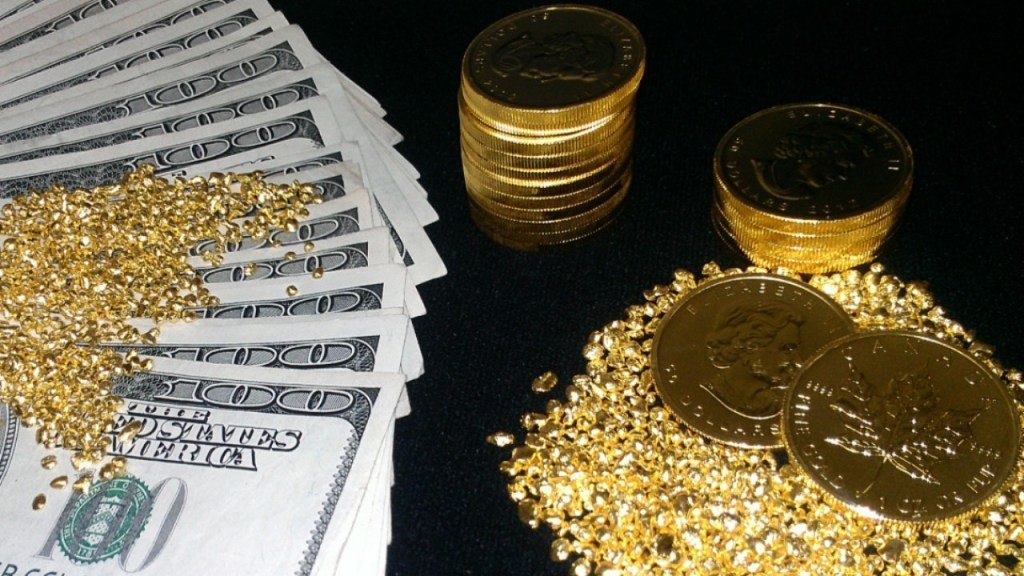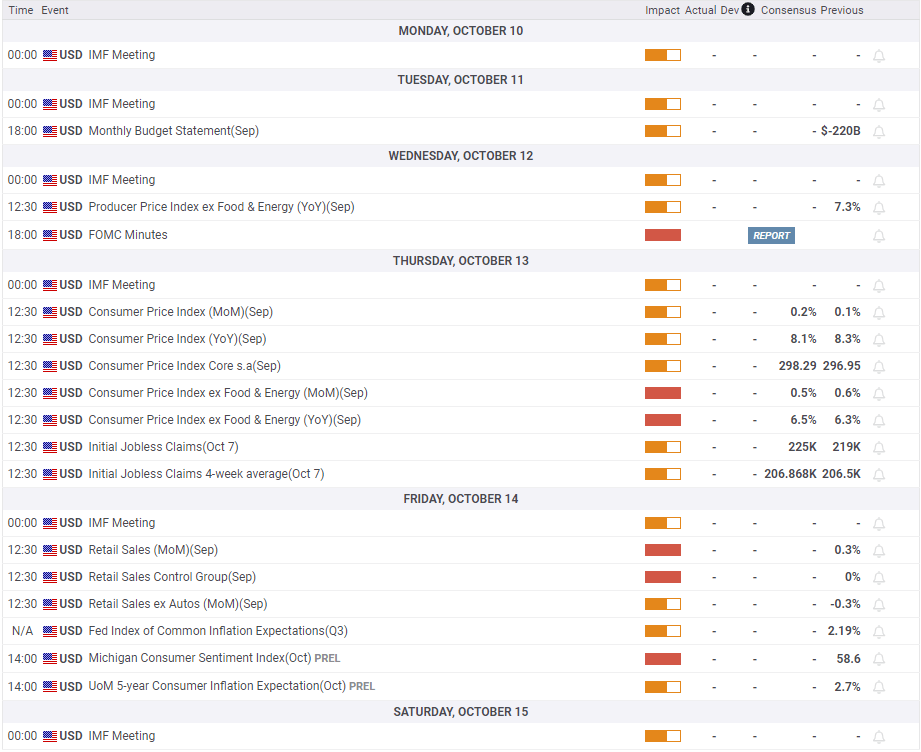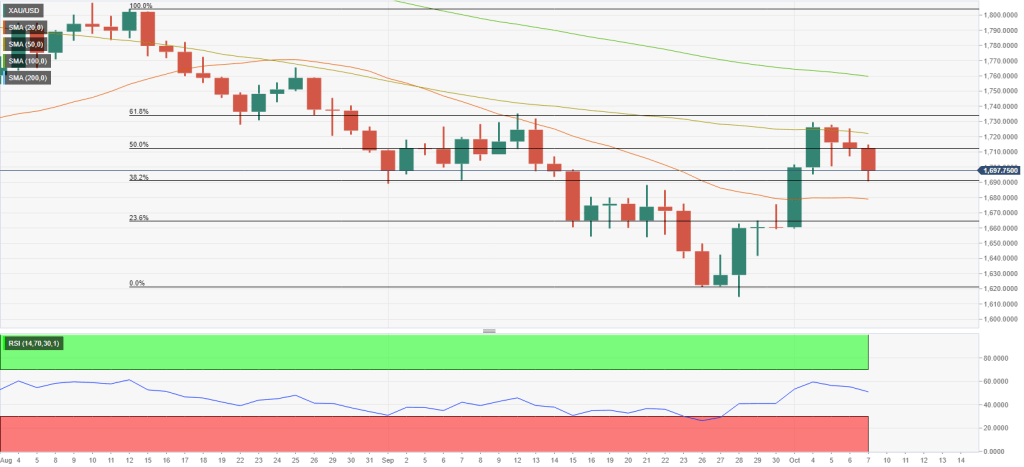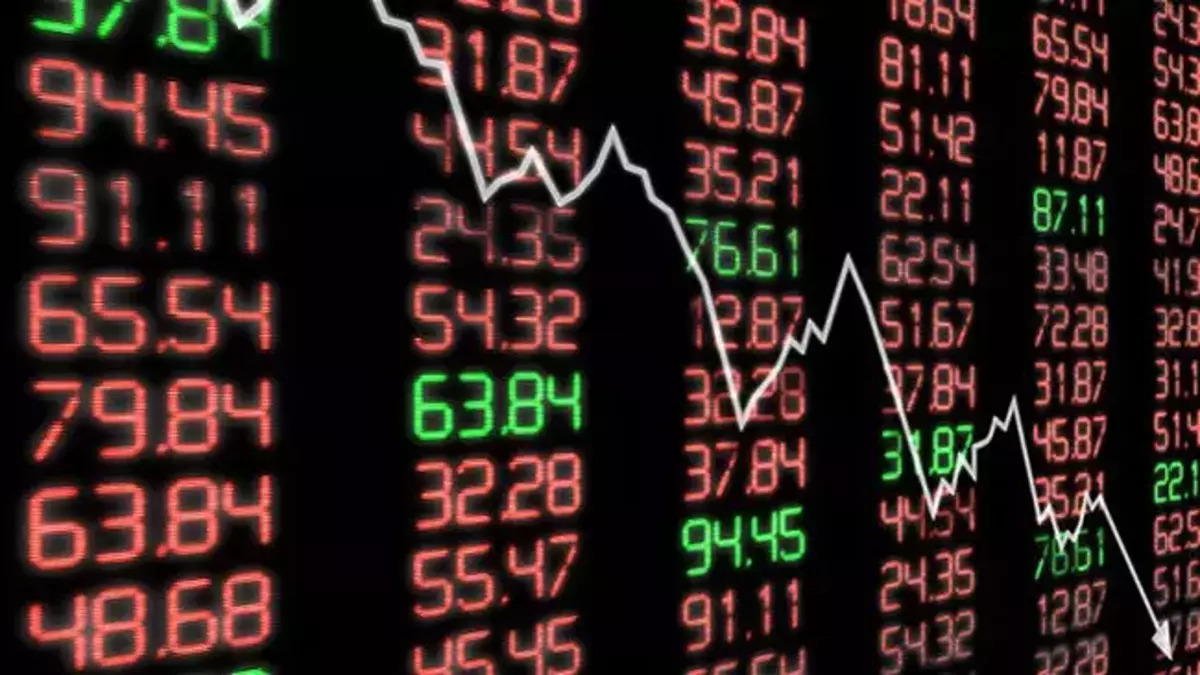Gold prices managed to break above the previous week’s gains and rose steadily on Monday. The break above $1,700 attracted technical buyers on Tuesday. Thus, gold climbed to its highest level since September 12 at $ 1,730 in the middle of the week. However, the strength of the dollar ahead of the weekend caused gold to erase most of its weekly gains. According to market analyst Eren Şengezer, September inflation data from the US is likely to trigger a significant market reaction.
Gold prices rally in the first half of the week
The improving market mood at the beginning of the week made it difficult for the dollar to find demand. Like this, cryptocoin.com As you follow, gold gained momentum. Meanwhile, the UK government’s decision to withdraw its proposal to abolish the 45% tax on high-income knocked down global bond yields one more leg. The 10-year U.S. Treasury yield fell nearly 5% on Monday. Gold subsequently rose more than 2%, posting its biggest one-day gain since March. Data from the US ISM showed that price pressures in the manufacturing sector continued to ease and employment contracted in September.
On Tuesday, risk flows continued to dominate financial markets. Therefore, dollar sales gained momentum. The US Dollar Index (DXY) has lost more than 1% on the day. However, the yellow metal climbed above $1,700. Accordingly, it reached a multi-week high at $1,730, attracting technical buyers. The Reserve Bank of Australia (RBA) increased the policy rate by only 25 basis points. This, in turn, fueled a rally in global equities. CME Group FedWatch Tool’s probability of a 75 basis point Fed rate hike in November dropped to 50%, driven by the RBA’s pigeon-raising.

Gold prices rose nearly 4% in the first two days of the fourth quarter. However, it later moved into the consolidation phase and recorded modest losses midweek. ADP reported that private sector employment in the US increased by 208,000 in September, compared to the market expectation of 200,000. In addition, the ISM Services PMI survey revealed that input inflation continued to rise strongly in the services sector. More importantly, the Employment Index component rose to 53 in September, beating analysts’ forecast of 49.6 by a wide margin. Optimistic data releases helped DXY rebound. Hence, it did not allow gold to regain its bullish momentum.
Gold fell below $1,700 again, with US NFP data
Markets remained relatively quiet during European trading hours on Thursday. Gold prices, on the other hand, fluctuated around $1,720 in a tight channel. In the second half of the day, hawkish comments from Fed officials helped boost the 10-year US T-bill yield. Thus, he forced the yellow metal to stay back on its feet. Atlanta Fed President Raphael Bostic said that the Fed’s fight against inflation is in its early days. San Francisco Fed President Mary Daly reiterated that they will raise rates to the restrictive zone and keep them there for a while. Finally, Minneapolis Fed Chairman Neel Kashkari reminded markets that the US central bank is “fairly far” from a pause in policy tightening.

The U.S. Bureau of Labor Statistics announced Friday that Nonfarm Employment rose by 263,000 in September, better than the market forecast of 250,000, and the Unemployment Rate fell to 3.5% from 3.7% in August. Fueled by the upbeat jobs report, the 10-year US T-bill rose towards 4%. This then caused gold to return to the $1,700 area ahead of the weekend.
First major action of the week: FOMC minutes
There will be no high-impact data releases from the US early next week. The FOMC will release the minutes of its September policy meeting on Wednesday. At this point, this publication is unlikely to offer any major surprises regarding the Fed’s policy outlook. The dot chart reaffirmed the Fed’s intention to raise the policy rate above 4.5% and keep it there next year. The analyst makes the following assessment:
If the statement shows that interest rate-makers are more concerned about the growth outlook than the policy statement in September, markets are likely to believe the dollar will lose altitude and open the door for a new rise in gold. But market reaction ahead of Thursday’s inflation report is likely to be short-lived.

Data that markets focus on: US CPI
Consensus expectation is for the Consumer Price Index (CPI) to rise to 8.5% yoy in September from 8.3% in August. In addition, annual Core CPI, which excludes volatile food and energy prices, is expected to rise from 6.3% to 6.5%. Investors are likely to put more weight on the main figure. Also, data above 6.5% is likely to boost another pillar of returns. In addition, the analyst comments:
On the other hand, an unexpected drop in core inflation could help gold gain bullish momentum. Still, the Fed has made it clear that they will not overreact to a single inflation data. He also noted that the initial market reaction may fade unless the next data significantly affects the market price.
The U.S. Census Bureau will release data on Retail Sales for September. Ahead of the weekend, the University of Michigan’s October Consumer Sentiment Survey will be watched closely by market participants. According to the analyst, it is possible that another drop in this data will cause the USD to come under selling pressure. However, the opposite is also true.

Gold prices technical outlook and gold sentiment survey
Market analyst Eren Şengezer makes the following analysis for the technical outlook of gold. The Relative Strength Index (RSI) indicator on the daily chart dropped to 50 towards the end of the week, showing that gold has lost its bullish momentum and has become neutral in the near term. If gold manages to hold above $1,700, it is likely to face initial resistance at $1,710 before $1,720. With a daily close above the second level, gold is likely to test $1,730. It is also possible to target $1,760 if it manages to turn it into support.
On the downside, $1,690 holds temporary support ahead of $1,680. If gold dips below the latter and starts using it as resistance, it is likely to extend its decline to $1,665.

Despite the decline seen in the second half of the week, the FXStreet Forecast Survey shows that experts expect gold to continue rising in the near term and the one-week average target remains at $1,710. Similarly, the one-month outlook also points to a bullish trend.








